Sharing my method of creating a small tree, bouquet form Pittosporum.
Yardvaark
3 years ago
Featured Answer
Sort by:Oldest
Comments (12)
Related Discussions
Rose gardens & bouquets of organic roses
Comments (35)Thank you, Jim and Cottagegarden for reviving this thread. I really appreciate the company of kind, and positive visitors to this forum. Like Cottagegarden, I bought 2 soil-test kits from local stores: Lowe and HomeDepot. They are totally useless and gave false result. Then I paid $20 for EarthCo. (professional soil-testing company) and my soil test came back high pH at 7.7, and deficient in everything, plus barely adequate in calcium ... I was so sure that my soil has plenty of calcium !! I'm next to a limestone quarry. For years I disagree with my neighbor on calcium. He insisted that his tomato in pots are lacking in calcium (blossom end-rot) ... He's right, after seeing how mixing gypsum (calcium sulfate) into the soil made 1st-year band-size La Reine went beserk with buds: due to winter-kill, it's only 8 inch. tall, but with 10 buds !! But the plant is stunt & brown leaves, and the blooms are small. I forgot to give it sulfate of potash (it should be twice more potassium than calcium). Yes to mixing gypsum into planting hole, but no more than 10% (I spent hours researching on the right % to mix in). I broke that rule many times, and end up with stunt plants & leaves showing potassium deficiency. Too much calcium drives down potassium. If you have a large garden, soil can vary: some part can be alkaline if watered frequently with high pH tap water. Most tap water are alkaline, I already tested a few with fish-tank litmus paper, even mineral bottled water has pH over 8. Some part of a garden can be acidic (if get rain water only, pH at 5.6). My soil test recommend mixing sulfur into clay. BAD ADVICE !! That was expensive and killed tons of earthworms. I like gypsum better, less caustic & cheaper ($4 for 25 lb. at Menards). Gypsum is great in breaking up compacted clay, provides calcium, plus de-salt soil. I moved 4 roses this spring: The ones that didn't get gypsum in the planting hole were slower to recuperate. The one that got gypsum in the planting hole, was VERY FAST in pumping out buds. See Duchess de Rohan below, 2 weeks after moving, with lots of buds. I moved that one since it was in too much shade, zero blooms. After moving to more sun, it exploded in buds. A note on moving roses. Roses which are grafted on Dr. Huey is less forgiving in moving. Dr. Huey is a long stick, and it's easy to break the tiny roots at the end. I moved knock-outs grafted on Dr. Huey twice before. Both time they lost all their leaves, and took at least 3 months to get back to normal. With own-root, it's so much easier to move: The roots are cluster: wide & shallow, rather than a long & deep stick like Dr. Huey. I moved at least 10 own-roots for the past 4 years: They recuperate quickly, lose zero leaves, IF THE ORIGINAL SOIL IS LOOSE & FLUFFY, then moving is zero stress. If the original soil is compact, digging them up caused many roots to be broken....See MoreRooting Rose Cuttings... methods and techniques
Comments (71)ROOTING ROSES with soft-wood cuttings IN LESS THAN 2 MONTHS. I'm in zone 5a, Chicagoland. Roses die to the crown through winter, and don't sprout new canes until May. Below rootings are from softwood & new growth. Soft-wood needs FAST DRAINAGE, so I use 1/3 perlite, 1/3 vermiculite, 1/3 sand or peaty potting soil. I drilled extra holes on the side of pots for fast drainage. First I top with my high magnesium clay, later on I top with high-nitrogen black peat compost. Watering is done once a day with acidic rain-water plus soaked red-lava for potassium. Soft-wood cuttings need more sun (at least 4 hrs.) to prevent fungal rot. Also pots are under a Norway spruce trees to shelter them from heavy rain that rot roots. These pots receive 10 to 20% of rain. I also put them ON TOP OF BRICKS to prevent roots of tree from crawling upward into pots. Below pic. is Evelyn from a rooting taken from a cutting 2 months ago. Since it's in partial shade, leaf-cutter bees ate the leaves. Rooting softwood is different from hardwood. Softwood requires more sun and I CANNOT COVER with plastic (they rot). But hardwood can be PARTIALLY covered with plastic to create more humidity, see below picture from below link (by Pamela), using coffee-cup (with plastic lid), but there's a hole to allow air to get it. https://www.flowerpatchfarmhouse.com/rooting-roses-from.../ Differences between soft-wood and hard-wood rooting: Soft-wood cuttings needs to be soaked for 1 day with alkaline tap water, rooting hormone is NOT necessary if the end is wounded. Soft-wood's leaves wilt easily with acidic rain. Soft-wood needs a FAST-DRAINING & fluffy medium such as perlite & potting soil, plus vermiculite to retain nutrients. Soft-wood also needs alkaline pH (more lime added). Soft-wood rots easily if the medium is acidic. Soft-wood also rots if covered with a plastic bag, best rooted in open air. Soft-wood also needs more sun to grow leaves. Below are my soft-wood rootings receiving only 10 to 20% of rain since heavy rain rots the rootings easily. HARD-WOOD rooting: needs longer-soak in acidic rain-water, plus rooting hormone to develop roots. Needs a wetter medium (such as 3/4 sand & 1/4 to 1/3 peatmoss), needs more shade, best with high humidity such as a plastic cover. To soak, see below link: "A long soak of the cuttings in one inch of below solution for 12-25 hours. Rates if you use Rhizopon AA Water Soluble Tablets: 1-2 tablets per liter of water." http://www.rooting-hormones.com/rose.htm Fat bud on a rooting done in less than 2 months. The secret is red-lava rock watering for potassium. Learn that tip from HMF Jay-Jay in the Netherlands ... he grows roses from seeds, using red-lava-sand. Below are my rootings done a few years ago under a spruce tree to block out heavy rain:...See MoreProgression - My First Small Group of Seedlings
Comments (81)Hi Rob, I live in a area where there is very few garden shops unfortunately. There is one I found this year that has beautiful Succulents but only a few small cactus. They did not have any Adeniums at all. I actually had never heard of them until I happened upon these poor ones at Walmart just running thru the garden area one day. So glad I took a chance on them. Only issue I am noticing is one plant has some leaves turning brown on the tips then yellowing. Any idea what is going on and a solution? I just noticed it so I moved that one away from the others. The ones that have had leaves turning yellow before falling off are doing much better but they did not turn brown. It is frustrating living so far away from a area that we can't find everything we need. Can not find any "equal numbered" fertilizer like 20-20-20 except for 1 all purpose 4-4-4 which you sprinkle around the soil anywhere here. What fertilizer do you recommend? I am hoping Amazon has what I need simply because I can get within a day or 2. I am new this year to any type gardening be it inground or container! Sorry for asking what some might think are crazy questions. Your Adeniums are beautiful by the way!...See MoreBouquets of no-spray roses & when and what to fertilize for health
Comments (28)Here's the recipe from Gardenknowhow site: https://www.gardeningknowhow.com/plant-problems/pests/pesticides/epsom-salt-for-pest-control.htm "Epsom Salt Solution Insect Control – A mixture of 1 cup Epsom salt and 5 gallons of water may act as a deterrent to beetles and other garden pests. Mix the solution in a large bucket or other container, and then apply the well-dissolved mixture to foliage with a pump sprayer. Many gardeners believe that the solution not only deters pests, but may kill many on contact. Dry Epsom Salt – Sprinkling Epsom salt in a narrow band around plants may be an effective means of slug control, as the scratchy substance abrades the “skin” of the slimy pests. Once the skin is effectively roughed up, the slug dries up and dies." From Straw: The epsom-salt-solution spraying is more effective than the dry-epsom salt for MIDGE. Why? Cornell University research on midge showed that midge larvae needs a certain % of moisture to hatch. I posted that research in 2014. Midge doesn't like it too dry nor too wet. One recommendation was to flood the area. My high-magnesium clay is SOAKING WET when it rains, but BONE-DRY when it's dry, so midge larvae can't hatch. Epsom-salt (magnesium sulfate) is neutral pH, so it won't hurt plants if you flood only the top 1/2" of soil. But if too much Epsom-salt solution gets to the root-zone, it'll make soil too dense for root-growth....See MoreYardvaark
3 years agoYardvaark
3 years agogardengal48 (PNW Z8/9)
3 years agodavidrt28 (zone 7)
3 years agolast modified: 3 years agoken_adrian Adrian MI cold Z5
3 years agoYardvaark
3 years agoemmarene9
3 years agoYardvaark
3 years agolast modified: 3 years ago
Related Stories
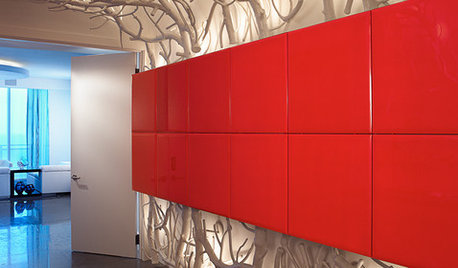
Branches Bring Organic Forms Indoors
Enhance Your Space With the Natural Look of Twigs and Trees
Full Story
TREES11 Japanese Maples for Breathtaking Color and Form
With such a wide range to choose from, there’s a beautiful Japanese maple to suit almost any setting
Full Story
GARDENING GUIDES5 Best-Behaved Trees to Grace a Patio
Big enough for shade but small enough for easy care, these amiable trees mind their manners in a modest outdoor space
Full Story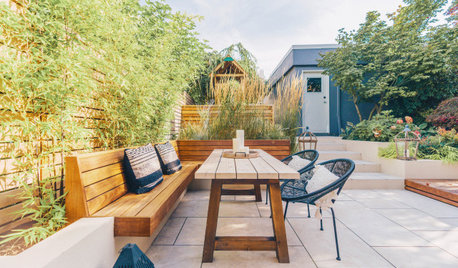
LANDSCAPE DESIGNPatio of the Week: Zones Create an Inviting Yard for a Family
A landscape design-build pro preserves existing trees while creating outdoor rooms and solving drainage issues
Full Story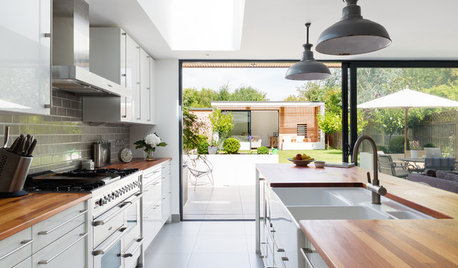
KITCHEN DESIGNA Designer Shares Her Kitchen-Remodel Wish List
As part of a whole-house renovation, she’s making her dream list of kitchen amenities. What are your must-have features?
Full Story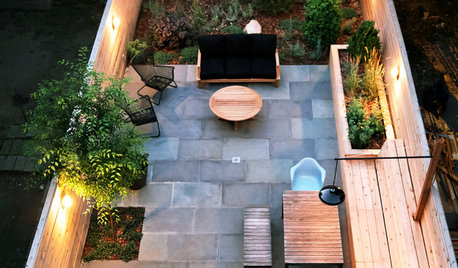
MOST POPULAR16 Ways to Get More From Your Small Backyard
Make a tight or awkward yard a real destination with these design tricks from the pros
Full Story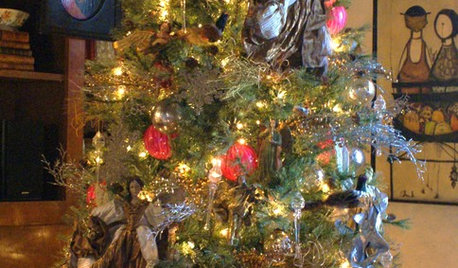
HOLIDAYSChristmas Tree Decorating the Painless Way
Holidays are for carols, not cussing. Make tree trimming less work and more fun with this guide at your side
Full Story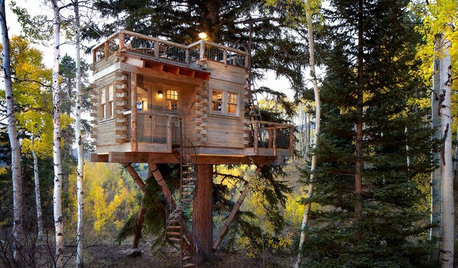
TREE HOUSESHouzz Call: Show Us Your Well-Designed Treehouse or Tree Fort!
Got a great treehouse or tree fort? We want to see it! Post yours in the Comments and we’ll feature the best in a future article
Full Story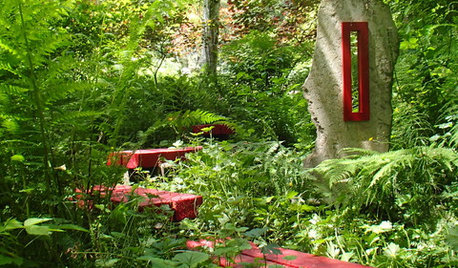
LANDSCAPE DESIGNCreate a Garden That Tells a Story
Take design cues from punctuation marks for a garden with order and intrigue
Full Story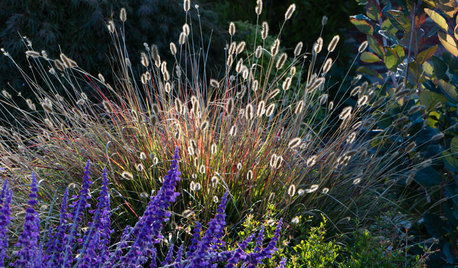
FALL AND THANKSGIVINGMake Fabulous Fall Bouquets With Seasonal Garden Ingredients
Late-blooming flowers shine when combined with fall leaves, garden herbs, branches of fruit, dried grasses and more
Full Story




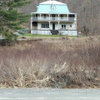


Embothrium